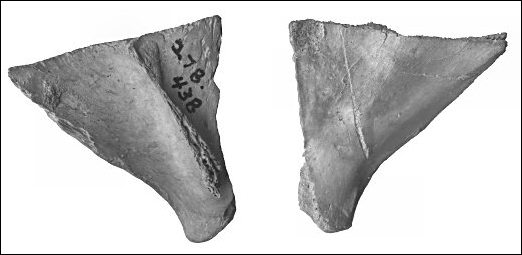

Cultural differences in food preferences abound. Why some El Pasoans have been known to turn up their noses at perfectly good roasted grasshoppers or fried earthworms! On the other hand, many of us willingly eat fried pork skin or indulge in a bowl of menudo filled with tripe. Of course, hunger may lead us to partake of foods we wouldn't otherwise touch with a 10-foot pole. This may have been the case in old Chinatown in El Paso.
Chinese railroad workers were stranded in the city with the completion
of the trans-continental railroad that passed through the town. Abandoned, there were
some few tough years as they struggled to make a living—a struggle undoubtedly
made worse by the prejudices of the day. Archaeological remains reveal several
non-domesticated food items, including two kinds of turtles, rabbit, domestic cat, and
badger. Now many of modern day Americans enjoy turtle soup and roasted rabbit. Although
not many of us here consider a tasty cat our cup of tea, still, it's considered a
delicacy in some places. But come on, now—badger?!!

Contributor: Arthur H. Harris, Laboratory for Environmental Biology, Centennial Museum, University of Texas at El Paso.
Desert Diary is a joint production of the Centennial Museum and KTEP National Public Radio at the University of Texas at El Paso.

Dorsal and ventral views of a butchered domestic cat shoulder blade from El Paso's Chinatown. Scanned images from a specimen in the Centennial Museum, Laboratory for Environmental Biology, collections.
Harris, A. H. 2004. Additions to the archaeological fauna of the
former Chinatown section of El Paso, Texas. Southwestern Naturalist 49:534-538.
![]()